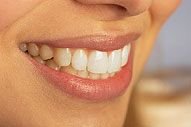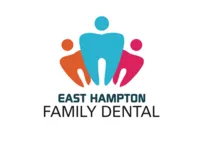Bleaching and non-bleaching products are the two basic kinds of whitening products available today. Non-bleaching products normally use abrasives or chemicals and only remove surface stains on teeth. Bleaching products work with a chemical called peroxide and can brighten your teeth several shades. Another
Read moreLocation
- Welcome! >
- Articles >
- Dental Education Library >
- Treatment >
- Cosmetic Dentistry
 Overview
Overview
People choose esthetic dental procedures/surgery for various reasons—to repair a defect such as a malformed bite or crooked teeth, treat an injury, or just improve their overall appearance. Whatever the reason, the ultimate goal is to restore a beautiful smile.
For these and many other reasons, esthetic dentistry has become a vital and important part of the dental profession.
Common esthetic dental procedures can be performed to correct misshaped, discolored, chipped or missing teeth. They also can be used to change the overall shape of teeth—from teeth that are too long or short, have gaps, or simply need to be reshaped.
Some of the more common procedures involve:
- Bonding - A procedure in which tooth-colored material is used to close gaps or change tooth color.
- Contouring and reshaping - A procedure that straightens crooked, chipped, cracked or overlapping teeth.
- Veneers - A procedure in which ultra-thin coatings are placed over the front teeth. Veneers can change the color or shape of your teeth. For example, veneers have been used to correct unevenly spaced, crooked, chipped, oddly shaped or discolored teeth.
- Whitening and bleaching - As the term implies, whitening and bleaching, a rapidly increasing procedure, are used to make teeth whiter.
Which techniques should be used to improve your smile? A dental exam will take many factors into consideration, including your overall oral health.
-
Bleaching
-
Bonding
Bonding is a process in which an enamel-like material is applied to a tooth`s surface, sculpted to an ideal shape, hardened, and then polished for an ideal smile. This procedure usually can be accomplished in a single visit. Bonding is often performed in order to fill in gaps or change the color of
Read more -
Chipped, Cracked, and Worn Teeth
Special thin laminates, called veneers, can often be used to correct discolored, worn down, cracked and chipped teeth. Veneers can also be used to close unsightly gaps between teeth. Stronger types of veneers made of porcelain, also called composite veneers, typically last longer because they are bonded
Read more -
Crowns and Bridges
Bridges Bridges are natural-looking dental appliances that can replace a section of missing teeth. Because they are custom-made, bridges are barely noticeable and can restore the natural contour of teeth as well as the proper bite relationship between upper and lower teeth.Bridges are sometimes referred
Read more -
Excessive or Uneven Gums
Many people inherit the problem of excessive or uneven gums. An aesthetic surgical procedure called a gum lift can be used to correct this problem.
Read more -
Grafts
Soft tissue grafts are sometimes performed to treat gum disease, or correct other abnormalities. The procedure involves taking gum tissue from the palate or another donor source to cover an exposed root in order to even the gum line and reduce sensitivity. Periodontal procedures are available to
Read more -
Implants
Before development of dental implants, dentures were the only alternative to replacing a missing tooth or teeth. Implants are synthetic structures that are placed in the area of the tooth normally occupied by the root. Implants are anchored to the jawbone or metal framework on the bone and act as
Read more -
Invisalign®
Invisalign's® invisible, removable, and comfortable aligners will give you the beautiful straight teeth you've always wanted. And best of all, no one can tell you're wearing them. Invisalign® is great for adults and teenagers. What is Invisalign®? Invisalign® is the invisible way to straighten your
Read more -
Old and Unsightly Fillings
Newer kinds of fillings made from composite resins and porcelain can restore unsightly fillings; many people are surprised how natural these kinds of filling materials can make a tooth once covered by the old-fashioned silver amalgams.
Read more -
Ridge Augmentation
If you lose one or more permanent teeth, an indentation may result in the gums and jawbone where the tooth used to be. When no longer holding a tooth in place, the jawbone recedes and the resulting indentation looks unnatural. Ridge augmentation is a procedure that can recapture the natural contour of
Read more -
Teeth Whitening
Whitening procedures have effectively restored the smile of people with stained, dull, or discolored teeth. The darker tissue of your teeth, the dentin, can become exposed as the outer layer of enamel is worn away by the effects of aging or things like caffeine and tobacco. Food particles are naturally
Read more -
Veneers
Teeth that are badly stained, shaped, or crooked may be improved by a veneer placed on the surface of the affected teeth.Veneers are thin pieces of porcelain or plastic cemented over the front of your teeth to change their color or shape. Veneers are used on teeth with uneven surfaces or that are chipped,
Read more
MEET YOUR DOCTOR

Vijaya Canakala, DMD
Dr. Canakala graduated from Boston University Goldman School of Dental Medicine in 2006. She worked in Private practice in Massachusetts for over nine years before she moved to Connecticut.
Dr. Canakala’s practice philosophy is to help restore and maintain good oral health for all her patients by providing excellent dental care in a gentle and compassionate way. She strongly believes in continuing education and training, and she will continue to make it a top priority in her practice. She gained extensive knowledge in not only general dentistry but expanded her skillset in aesthetic procedures and implant restorations in her practice.
Dr. Canakala is a member of American Dental Association (ADA), Connecticut State Dental Association (CSDA) and Middlesex County Dental Society.
In her personal time, she enjoys spending time with her husband, Mukesh (who is also a Dentist), their family and friends. She loves to spend time outdoors with her two beautiful sons Aarush and Ishan.
OFFICE HOURS
Monday:
8:00 am-5:00 pm
Tuesday:
9:00 am-6:00 pm
Wednesday:
Closed
Thursday:
8:00 am-5:00 pm
Friday:
8:00 am-5:00 pm
Saturday:
by appointment only
Sunday:
Closed
